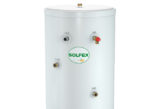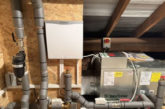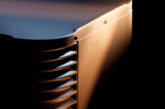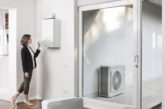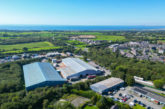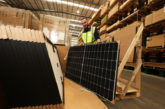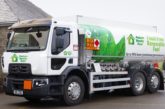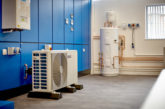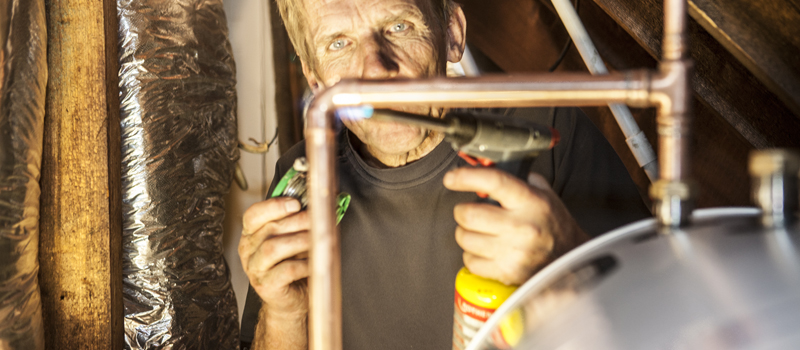
Roger Bisby takes a sideways look at installing Gledhill’s horizontal solar cylinder.
As a plumber who has been involved in a fair number of loft conversions, I have long been aware of the need for a horizontal cylinder that can be tucked neatly away in an eaves cupboard. After all, not everyone who has a loft conversion wants a combi, especially if they have several baths or showers on the go. If they do have a cylinder, they certainly don’t want it taking up valuable space in the loft conversion or on the floor below where a new staircase has to be accommodated. The eaves cupboard is therefore the obvious space and it becomes even more compelling if you are fitting solar thermal panels. I was therefore delighted when Gledhill introduced the horizontal range with the option of solar. When you think about, it this is no mean feat because a solar coil needs to occupy the lower part of the cylinder with indirect primary from the boiler acting as a top-up. But what am I thinking? Gledhill has been getting plumbers out of difficult situations with its specials for years so coming up with a horizontal solar cylinder was probably a walk in the park.
For my part, the installation was – if not quite a walk in the park – very straightforward and stress-free. The biggest problem I had in this job was the photography. Plumbers are used to working in tight spaces but getting a photographer in there proved a little too cosy at times. I could see his nervousness when I fired up the blow torch. Admittedly it would be a lot easier to put a cylinder in an eaves cupboard if you put the cylinder in first and then built the dwarf wall, but this job was a retrofit in an existing loft conversion. The reason the customer decided to go for the horizontal cylinder option at this late stage was to free up space on the floor below to add an en-suite shower.
Fortunately for me, the location of the new cylinder was just above the old one so it was an easy matter to bring the primaries up through the ceiling into the eaves cupboard. The solar hook-up was even easier because we brought the stainless steel flexis in through the roof tiles and straight into the solar pump station. My chief aim was to avoid a tangle of pipework in the eaves cupboard. I wanted it to be possible for plumbers in the future to be able to get in there and change an immersion heater without major contortions.
The Gledhill cylinder sits on two very substantial galvanised steel cradle feet and there are small indentations in the steel casing to make sure the cylinder orientation is spot on. Mindful of the weight, and the evidence of a bit of woodworm in the boards, I laid a substantial piece of timber under each foot in order to spread the load across to the joists.
With all the important connections clearly marked on the top, it was very easy to pipe up. There was even an optional secondary return. The tappings are all 22mm compression fittings with a blanking plug for the secondary return. The heavy pattern drain-off (supplied) screws into a 1/2in. tapping in the bottom. I have abandoned the use of PTFE tape in favour of fibre string. It has a lot more body in it and I find it tightens nicely so you can bring the spigot around the front of the unit without worrying about the drain-off being accidentally rotated.
I placed the PRV and expansion vessel close to the eaves cupboard door so it could be checked and serviced in comfort. And even though the cylinder itself is well insulated, I made sure that I provided extra insulation around the cylinder – especially where the pipes were running up the rafters and along the purlin. The builder I was working for had never seen a horizontal cylinder before, let alone an unvented solar one, and he was extremely impressed. I expect to be getting some repeat orders very soon. As he said, it’s a no-brainer. My only regret is that all that lovely plumbing is hidden away.


